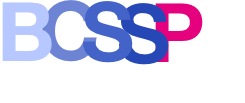Child abuse can take a range of different forms. A child being mistreated or abused, sometimes called ‘significant harm’, can be defined as physical abuse, emotional abuse, sexual abuse or neglect.
Child abuse can occur at home, or in the organisations, schools or groups that you go to.
There are 4 major categories of child abuse:
Physical abuse is defined as when someone deliberately hurts a child, such as hitting, shaking, throwing, poisoning, burning, drowning or suffocating a child deliberately and with the intention of causing harm.
If a child is hurt by a relative, friend or stranger and it causes them physical harm, such as cuts, bruises, broken bones or other injuries, it is physical abuse.
Emotional abuse can take different forms such as when a child is unfairly blamed for everything, or told they are stupid, worthless or ugly and made to feel very sad and unhappy. Emotional abuse is severe and persistent ill treatment of a child. It can have long-lasting and devastating effects on a child’s emotional health and development.
Emotional abuse may be the only form of abuse suffered by a child, or it might be an element of other child abuse and neglect.
Neglect is where a child is not being looked after properly. This can include not getting enough to eat or being left alone in dangerous situations. Neglect is the persistent failure to meet a child’s basic and essential needs.
Children need adequate food, water, shelter, warmth, protection and health care and they need their carers to be attentive, dependable and kind. If a child does not have a safe and stable home, this is neglect.
Child sexual abuse involves persuading or forcing a child to take part in sexual activities, or encouraging a child to behave in sexually inappropriate ways.
The sexual abuse of children is more than just physical sexual contact and includes sexual touching clothed or unclothed, all penetrative sex, intentionally engaging in sexual activity in front of a child and making, permitting to take, distributing and showing or advertising indecent images of children.
What is Child Sexual Exploitation?
Child sexual exploitation (CSE) is a type of sexual abuse in which children are sexually exploited for money, power or status.
Children or young people may be tricked into believing they’re in a loving, consensual relationship. They might be invited to parties and given drugs and alcohol. They may also be groomed online.
Some children and young people are trafficked into or within the UK for the purpose of sexual exploitation. Sexual exploitation can also happen to young people in gangs.
Possible Signs of Abuse or Neglect
The warning signs and symptoms of child abuse and neglect can vary from child to child. Disabled children may be especially vulnerable to abuse, because they may have an impaired capacity to resist or avoid abuse. They may have speech, language and communication needs which may make it difficult to tell others what is happening.
By understanding the warning signs, you can respond to problems as early as possible. It is important to recognise that a warning sign doesn’t automatically mean a child is being abused.
There are a number of warning indicators which might suggest that a child may be being abused or neglected, including the following:
- Children whose behaviour changes – they may become aggressive, challenging, disruptive, withdrawn, or clingy. They might have difficulty sleeping, or start wetting the bed.
- Children with clothes which are ill-fitting and/or dirty
- Children with consistently poor hygiene.
- Children who make strong efforts to avoid specific family members or friends, without an obvious reason.
- Children who don’t want to change clothes in front of others or participate in physical activities.
- Children who are having problems at school, for example, a sudden lack of concentration and learning or they appear to be tired and hungry.
- Children who talk about being left home alone, with inappropriate carers or with strangers.
- Children who reach developmental milestones, such as learning to speak or walk, late, with no medical reason.
- Children who are regularly missing from school or education.
- Children who are reluctant to go home after school.
- Children with poor school attendance and punctuality, or who are consistently late being picked up.
- Parents who are dismissive and non-responsive to practitioners’ concerns.
- Parents who collect their children from school when drunk, or under the influence of drugs.
- Children who drink alcohol regularly from an early age.
- Children who are concerned for younger siblings without explaining why.
- Children who talk about running away.
- Children who shy away from being touched or flinch at sudden movements.


